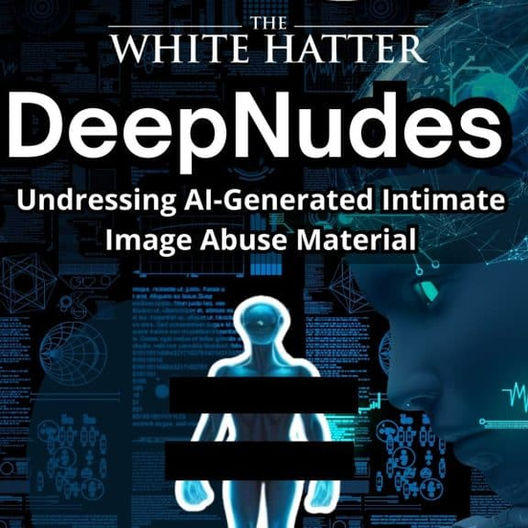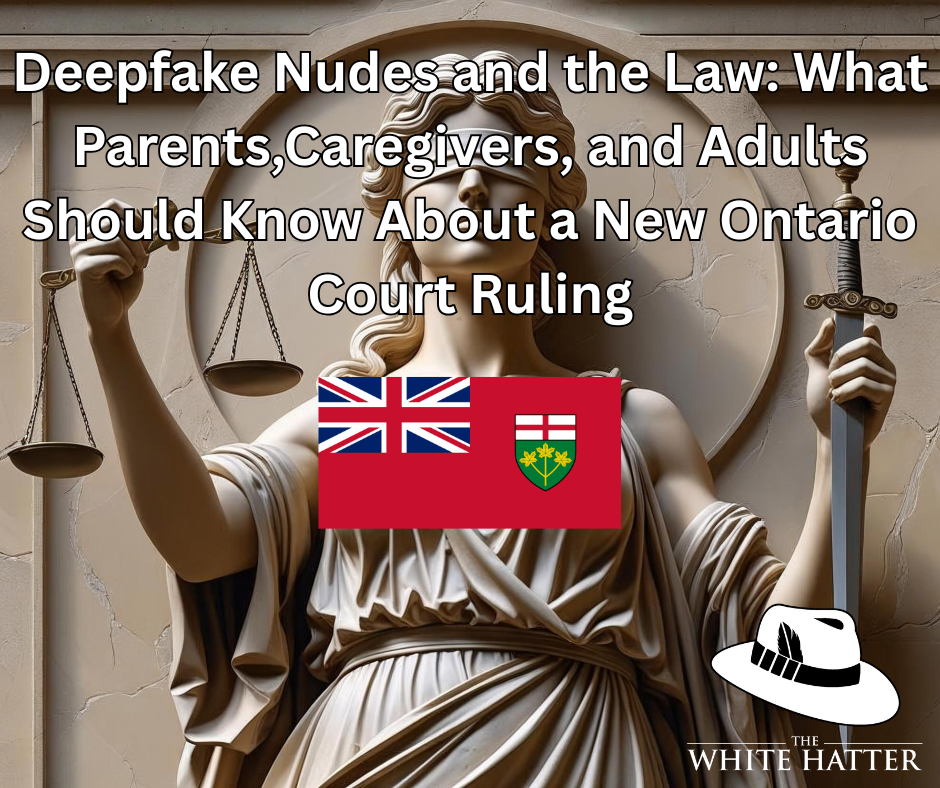Do You Know Who’s Influencing Your Child? It Might Not Even Be a Real Person.
- The White Hatter

- Jun 3
- 4 min read

In today’s fast-paced digital world, social media influencers play a powerful role in shaping the opinions, trends, and even purchasing decisions of youth and teens. Unlike traditional celebrities who rose to fame through movies, music, or sports, these influencers gain popularity by consistently posting content about their interests, whether it’s makeup tutorials, gaming walkthroughs, fashion hauls, or lifestyle advice. Their loyal followers often look to them not just for entertainment but for guidance and inspiration. This is why big brands pay these influencers big buck to promote their products. However here’s the twist, today not all influencers are human anymore and many Gen Z youth and teens don’t care that these influencers aren’t real.
Welcome to the new world of AI-generated influencers, computer-created avatars designed to look, act, and speak like real people. These virtual personalities are already becoming household names online, here are just three examples:
Lu Do Magalu with 7.8 million followers (1)
Limiquela with 2.4 million followers (2)
Fit Aitana with 364,000 followers (3)
Another example, a virtual model with pink hair called Imma has partnered with companies like Porsche, BMW, and Amazon Fashion. (4) Lil Miquela, a digital 19-year-old with millions of followers who’s worked with major fashion brands like Calvin Klein and Prada, reportedly earning around $11 million annually, all without ever taking a real selfie. (5)
The rise of AI influencers introduces a new layer of complexity to parenting in today’s onlife world. It’s no longer just about monitoring who your child follows or chats with online, it’s about understanding that some of the most persuasive figures on their feed might not be real people at all.
These virtual influencers are incredibly convincing. They’re lifelike, engaging, and often indistinguishable from their human counterparts at first glance. They post about their “lives,” share product recommendations, attend digital events, and interact with followers. But unlike human influencers, their personalities, aesthetics, and values are entirely manufactured to match a brand’s marketing goals.
This raises important questions about authenticity, emotional connection, body image, and commercial manipulation, topics that are already difficult for youth and teens to navigate, even when dealing with real people. How can we expect them to tell what’s genuine and what’s programmed when even many adults struggle with the same challenge?
According to “Influencer Marketing Hub”, (6) there are five main reasons AI influencers are becoming so popular with brands:
They’re highly customizable
AI influencers can be tailored to perfectly match a target demographic. Whether a brand wants to reach teen gamers or young makeup enthusiasts, they can program an avatar to act and speak in ways that are specifically designed to appeal to that audience.
They ensure consistent branding
Unlike humans, AI influencers don’t veer off-message. They won’t say the wrong thing, change their opinions, or make personal mistakes that could damage a brand’s image. They are engineered to always align with the company’s narrative.
They are always available
AI influencers don’t get tired, sick, or need to travel. They can post content 24/7, speak any language, and “attend” events across the globe—all with the click of a button.
They avoid controversy
Human influencers, no matter how careful, are still prone to emotional responses, public mistakes, and scandals. Virtual influencers, on the other hand, are risk-free in this regard. They don’t argue, protest, or get caught in drama.
They are cost-effective
While building an AI influencer can be expensive upfront, the long-term costs are lower. There are no travel expenses, appearance fees, or contractual headaches. And there’s no risk of them asking for a raise or backing out of a campaign.
So what can parents and caregivers do? The world of digital influence is changing rapidly, and our children are growing up within it. What used to be science fiction is now embedded in their feeds. In today's rapidly evolving onlife world, critical thinking, especially as it relates to AI digital literacy, has become one of the most essential life skills we can teach our children. With the growing presence of influencers and AI-generated personas shaping opinions and behaviours online, helping youth develop the ability to question, evaluate, and interpret what they see on their screens is more important than ever.
A great starting point is to initiate open, judgment-free conversations. Ask your child who they follow on social media and, more importantly, why. Show a genuine interest in their favourite influencers and explore that content with them. By approaching these conversations with curiosity instead of criticism, you create a safe space where your child feels heard and is more likely to engage in honest dialogue.
From there, it’s vital to unpack the idea of authenticity. Many influencers, especially those backed by brands or generated by artificial intelligence, aren’t just sharing content, they’re selling products, lifestyles, or ideas. Help your child recognize that these posts may be carefully curated or even entirely programmed to generate sales or engagement, not to provide meaningful personal connection.
Equally important is addressing the emotional bonds that can form through screens. These influencers, particularly AI-generated ones, are often crafted to simulate warmth, trust, and intimacy. Talk to your child about how these relationships can feel real but are ultimately one-sided and engineered for attention, not mutual connection.
Building digital literacy is crucial. Teach your child how to discern the difference between content that is authentic and content designed to influence behaviour. Help them ask critical questions such as, “Who created this?”, “What do they want me to do or feel?”, “Is this message sponsored?” This kind of awareness empowers youth to navigate the digital world with confidence, clarity, and a healthy dose of skepticism.
Above all, it’s essential to keep the lines of communication open. Youth and teens don’t need to fear AI influencers, but they do need to understand what they’re engaging with and why it matters. In a world where the line between fiction and reality is increasingly blurred, our goal should be to keep young people curious, informed, and empowered, equipped with the knowledge to navigate the onlife world confidently, rather than left confused by the increasingly lifelike personas they encounter online.
Digital Food For Thought
The White Hatter
Facts Not Fear, Facts Not Emotions, Enlighten Not Frighten, Know Tech Not No Tech
References:














